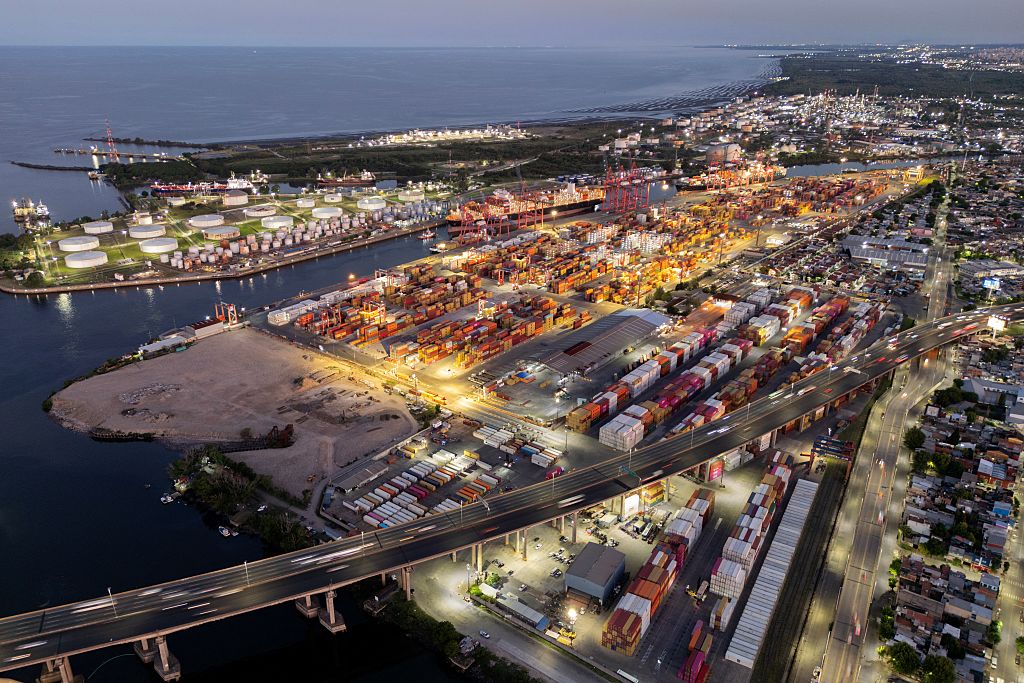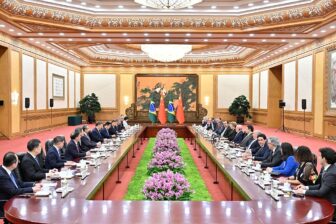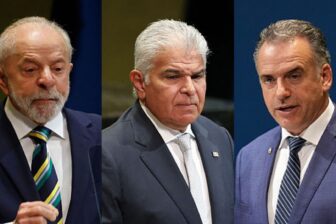
The Trump administration’s flurry of trade and investment agreements with Guatemala, Argentina, Ecuador, and El Salvador are potentially historic – in what they mean for Latin America, and the international trading system more broadly.
Announced last week, they are among the first measures expanding this administration’s engagement in Latin America beyond security and migration issues. They will provide the four countries with privileged access to the United States markets. More globally, these four agreements, combined with deals with Cambodia and Malaysia, show us where President Donald Trump wants to take global trade. Instead of comprehensive multilateral agreements promoting free trade, we now have a hub-and-spoke system with the U.S. at the center – faster to negotiate, but also less predictable.
Indeed, there is no existing agreement – CAFTA-DR, USMCA, free trade agreements with Panama, Colombia, etc. – immune from replacement by this new model. Whether the November 13 announcements become the blueprint for future deals worldwide or get struck down depends on an ongoing U.S. Supreme Court review of presidential trade authority. And that is the big question: Will these deals result in lasting wins for the Latin American trading partners involved, or will the uncertain legal foundation of the deals ultimately leave those countries in limbo?
What’s Different This Time
The new frameworks have several unique characteristics. They (1) use presidential emergency powers under the International Emergency Economic Powers Act (IEEPA), a statute originally designed to allow the president to impose sanctions on rogue states or freeze assets during national emergencies and now repurposed to construct bilateral trade regimes; (2) put security concerns front and center in commercial relationships; (3) replace permanent tariff cuts with performance-based relief that countries have to keep earning; (4) make China containment a central goal of trade policy; and (5) move toward replacing multilateral deals with bilateral agreements.
Under the new frameworks, the U.S. drops tariffs on specific products that aren’t made in the country, but only if partners meet certain U.S. geopolitical and commercial conditions. Standard levies of 10-15% remain in place on most goods, and the U.S. keeps the right to place additional tariffs in the future for national security or unfair trade practices.
Common features across all four deals include selective tariff breaks on products the U.S. does not produce in meaningful amounts. Intellectual property enforcement targets each country’s specific challenges as seen by the U.S. Trade Representative. Digital trade protections seek to prevent discriminatory taxes and keep data flowing across borders. Tougher labor and environmental standards will include bans on imports made with forced labor and commitments to sustainability. Economic security alignment also covers export controls, investment screening, supply chain strengthening, and pushing back against “non-market economy distortions” (a mechanism targeting China).
USTR’s announcement makes clear Argentina is getting special attention because it is seen as especially friendly to the Trump administration. The other three partners are viewed as cooperative with the U.S. on core priorities, such as migration and security.
Argentina wins expanded access for high-value farm products and certain pharmaceutical-related goods. The deal also hints at possible exemption from future national security tariffs and opens the door to preferential treatment for Argentine exports of lithium and other critical minerals.
Guatemala and El Salvador get back to zero tariffs for certain textile and clothing products that were already covered under CAFTA-DR, plus better access for some agricultural and mineral products. If these deals go through, both countries could benefit as the Trump administration moves to kick Nicaragua out of CAFTA-DR through an ongoing trade enforcement process and higher tariffs that could force many manufacturers to move their operations out of Nicaragua. Ecuador could receive relief on agricultural exports, such as bananas, cocoa, and coffee, in exchange for modernizing its trade procedures to make it easier and cheaper for U.S. companies to export there.
The deals are also notable for who is missing, at least for now. Applying the criteria employed so far by the administration, it’s easy to imagine the Dominican Republic, Uruguay, Paraguay, Chile, and Costa Rica in future rounds, with Peru (with its Chinese-built port of Chancay), Brazil, Colombia, Panama, and possibly Honduras most likely facing political or other barriers to rapid engagement. Honduras and the Dominican Republic would be especially disadvantaged if El Salvador and Guatemala gain preferential access at a time of rapidly shifting international supply chains, and they do not.
Potential roadblocks and risks
There are several risks ahead – some systemic, others country-specific.
Argentina faces the trickiest situation: Mercosur rules require all member countries to agree on external trade deals. Argentina might have to choose between this U.S. framework and staying in Mercosur, which could damage relationships with regional partners and disrupt crucial trade with Brazil. The deal could also create tension with China, which remains a key economic partner.
Guatemala needs to figure out how to square the deal with its existing CAFTA-DR commitments—which might require review by its Constitutional Court—and weigh the risks to domestic businesses from increased U.S. competition in sectors like pharmaceuticals. Ecuador and El Salvador face significant challenges in implementing complex customs and regulatory reforms, given their limited administrative resources.
All four countries will have to navigate pushback at home from groups with economic ties to China or those benefiting from protectionist measures these agreements could eliminate.
But the biggest question is legal: can the president use IEEPA—a law designed for national emergencies—to overhaul U.S. trade relationships?
On November 5, the Supreme Court heard arguments challenging this use of IEEPA for tariffs. Several justices sounded skeptical, noting that IEEPA’s text never mentions “tariffs,” “duties,” or “taxes.” 207 members of Congress filed a brief opposing the administration’s position.
The Supreme Court is expected to rule sometime between December and June 2026. If the Court rules against the administration, it would pull the legal rug out from under all IEEPA-based agreements, potentially forcing a pivot to alternative approaches like national security tariffs or unfair trade practice investigations—both slower and less suited to the purposes outlined in these new frameworks. The Trump administration may try to rush through these and other agreements under IEEPA before the Supreme Court can weigh in, hoping to create facts on the ground that the justices would be reluctant to undo.
For now, the frameworks announced on November 13 position Latin American partners at the forefront of a radically new approach to U.S. trade policy. If the Supreme Court rules that President Trump exceeded his powers using IEEPA, however, those countries could become unintended victims in President Trump’s tumultuous effort to remake American governance according to his vision.









